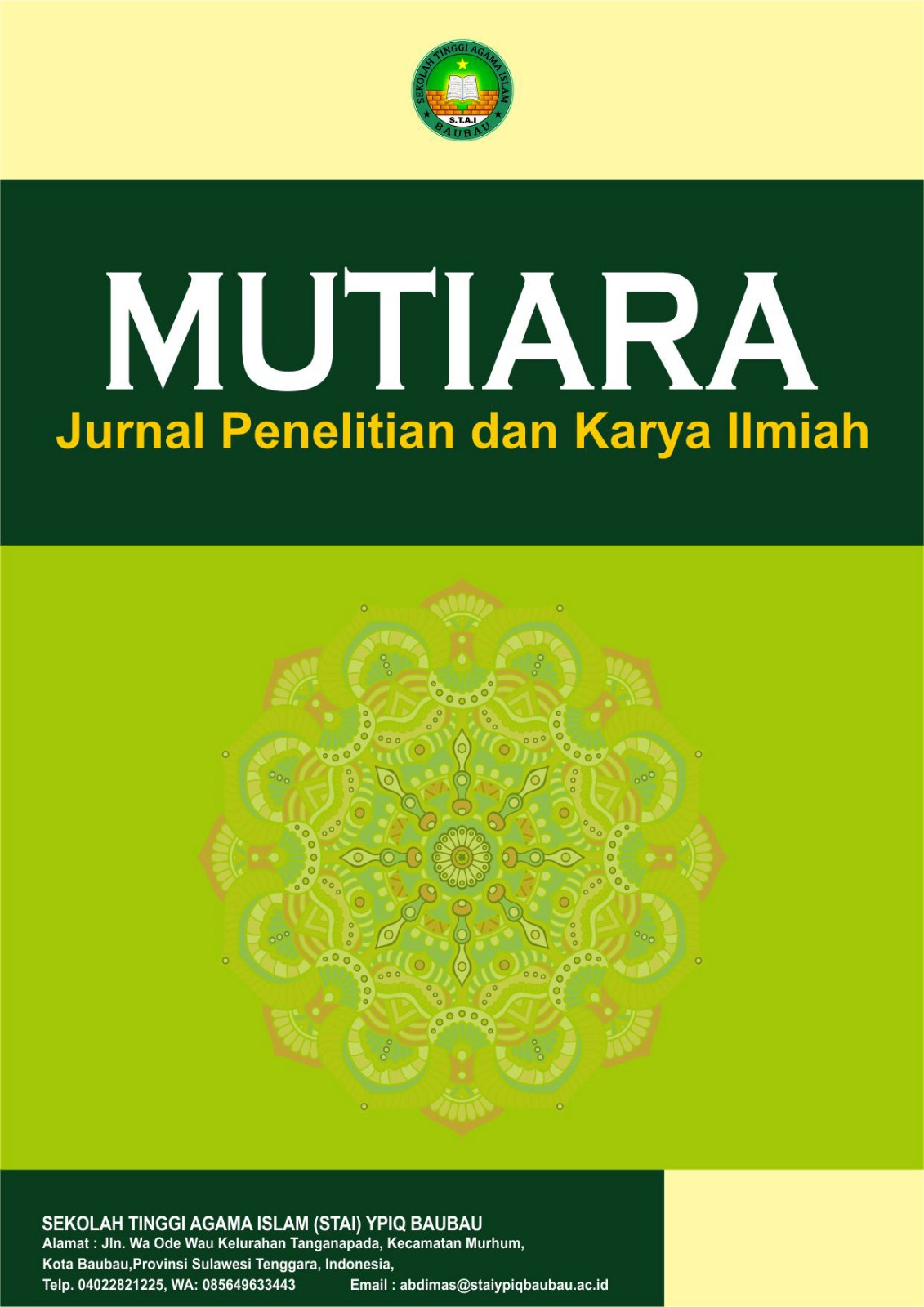Analisis Morfologi dan Distribusi Bakteri Fermentatif pada Bekasam Ikan Nila Melalui Pewarnaan Gram, Kristal Violet dan Safranin
DOI:
https://doi.org/10.59059/mutiara.v3i4.2722Keywords:
Bekasam, Crystal Violet, Fermentative Bacteria., Gram Staining, SafraninAbstract
Bekasam is a traditional fermented product made from tilapia (Oreochromis niloticus) containing a variety of fermentative microorganisms. This study aims to observe the morphology and distribution of fermentative bacteria in bekasam tilapia using the Gram staining method with crystal violet and safranin. Bekasam samples were fermented traditionally, then 1 gram of sample was taken and serial dilutions were carried out, followed by cultivation on Nutrient Agar (NA) media. The growing colonies were stained using crystal violet, iodine, alcohol, and safranin. This differential staining allows the identification of Gram-positive (purple) and Gram-negative (pink) bacteria. Microscopic observations showed a variety of bacterial shapes, including rod-shaped (bacilli) and spherical (cocci), with a fairly even distribution of Gram-positive and negative bacteria. The conclusion of this study is that bekasam contains a mixture of fermentative bacteria that can be identified through Gram staining, and this method is effective for the initial characterization of microorganisms in fermented foods. This research is useful for supporting the development of safer and more functionally valuable traditional fermented products. Furthermore, the results of this study also demonstrate the importance of understanding the role of fermentative bacteria in the bekasam-making process, which can contribute to the quality and safety of fermented products. By understanding the types and distribution of bacteria involved, producers can better understand the factors that influence the fermentation process, such as temperature, time, and raw materials. This knowledge also opens up opportunities to improve bekasam quality, both in terms of taste, texture, and nutritional content. Therefore, further research into the characteristics of other microorganisms involved in bekasam fermentation is crucial to ensure that this product is not only safe for consumption but also offers greater health benefits for consumers.
References
Amalia, N., Ramadhani, L. I., & Maulina, T. (2022). Gram staining analysis of bacteria in spontaneous fermented food: An educational case study. International Journal of Microbiology Education, 6(1), 34-40.
Darmawan, A. (2022). Fermentasi Tradisional dan Potensinya dalam Pangan Lokal. Jurnal Teknologi Pangan Indonesia, 13(2), 77-85.
Haryati, S., Pramono, Y. B., & Nugroho, R. A. (2021). Identification of lactic acid bacteria in fermented fish using gram staining and biochemical test. Jurnal Teknologi Hasil Perikanan, 14(1), 15-22.
Herlina, R., Zainal, A., & Nuraini, N. (2020). Karakteristik Bekasam Ikan Nila Berdasarkan Lama Fermentasi. Jurnal Ilmu dan Teknologi Hasil Perikanan, 15(1), 50-56.
Kim, Y., Oh, S., & Lee, J. H. (2020). Changes in microbial community during fermentation of seafood-based products. Food Microbiology, 86, 103347.
Lee, M., Jung, J., & Park, S. (2020). Characterization of lactic acid bacteria isolated from Korean kimchi. Journal of Fermented Foods, 7(3), 178-185.
Mulyati, S., Andriani, Y., & Nurhayati, T. (2019). Isolation and characterization of bacteria in traditional fermented fish. Jurnal Mikrobiologi Indonesia, 12(2), 89-94.
NauE, R., Wulandari, A., & Sitorus, H. (2022). Pewarnaan Diferensial sebagai Teknik Dasar dalam Mikrobiologi. Jurnal Sains Terapan Mikrobiologi, 6(3), 145-152.
Putri, M. D., Hasanah, N., & Sari, E. (2023). Isolasi dan Identifikasi Bakteri Asam Laktat dari Bekasam Tradisional. Jurnal Mikrobiologi Indonesia, 9(1), 25-32.
Rahayu, E. S., & Nugroho, F. A. (2019). Mikroorganisme Probiotik dalam Produk Fermentasi Tradisional Indonesia. Indonesian Journal of Applied Microbiology, 5(2), 88-94.
Rahman, M. M., Rathi, J. M., & Sarker, M. (2023). Role of lactic acid bacteria in fermentation and their industrial application. International Journal of Food Microbiology, 371, 110998.
Santoso, J., & Rini, D. (2021). Potensi Mikrobiota Fermentatif Lokal dalam Pengembangan Probiotik. Jurnal Pangan dan Gizi, 14(1), 93-99.
Shaloma, N., Indriani, D., & Lestari, K. (2023). Peran Pewarnaan Gram dalam Studi Mikrobiologi Pangan Fermentasi. Jurnal Biologi Tropis, 11(1), 101-107.
Susanti, I., & Ramadhan, M. (2021). Pengaruh Fermentasi terhadap Mutu Sensorik dan Mikrobiologi Bekasam. Jurnal Pangan Lokal, 10(2), 63-69.
Virgianti, A., & Luciana, R. (2017). Pewarnaan Gram dalam Identifikasi Bakteri Klinis dan Pangan. Jurnal Bioteknologi dan Biosains Indonesia, 3(1), 12-18.
Wahyuni, T., Herawati, E., & Sari, A. (2018). Gram staining technique in the identification of bacteria from traditional fermented food. Indonesian Journal of Applied Microbiology, 1(2), 45-51.
Wijaya, A., & Herlambang, B. (2022). Pengamatan Pewarnaan Gram untuk Identifikasi Mikroorganisme Pangan Tradisional. Indonesian Journal of Microbial Research, 7(2), 66-73.
Yuniarty, L., & Misbach, M. (2016). Perbandingan Pewarnaan Kristal Violet dan Safranin pada Bakteri Gram Positif dan Negatif. Jurnal Laboratorium Medik, 4(2), 40-46.
Downloads
Published
How to Cite
Issue
Section
License
Copyright (c) 2025 Mutiara : Jurnal Penelitian dan Karya Ilmiah

This work is licensed under a Creative Commons Attribution-ShareAlike 4.0 International License.








